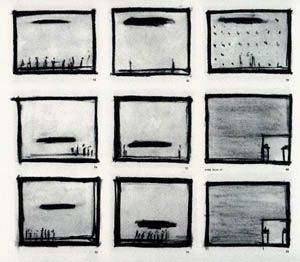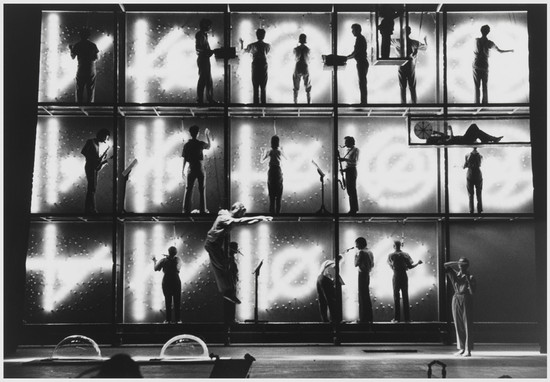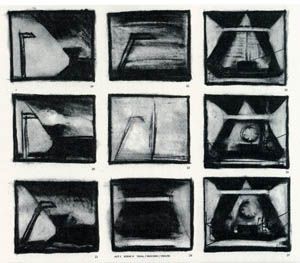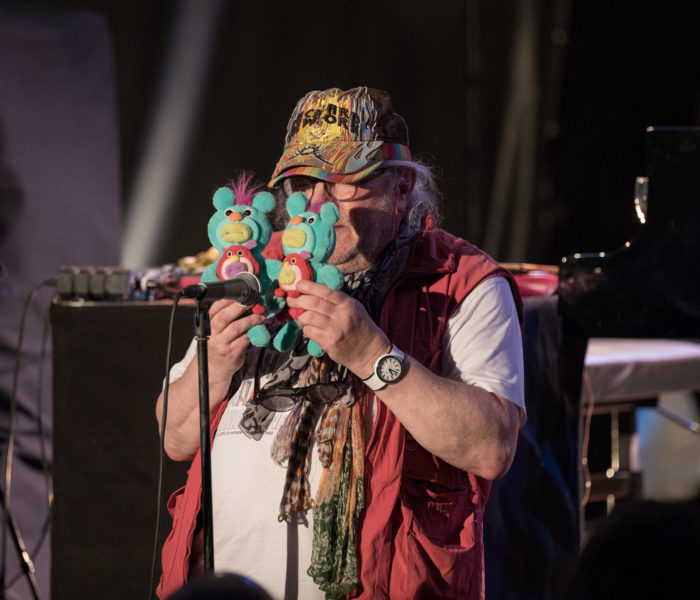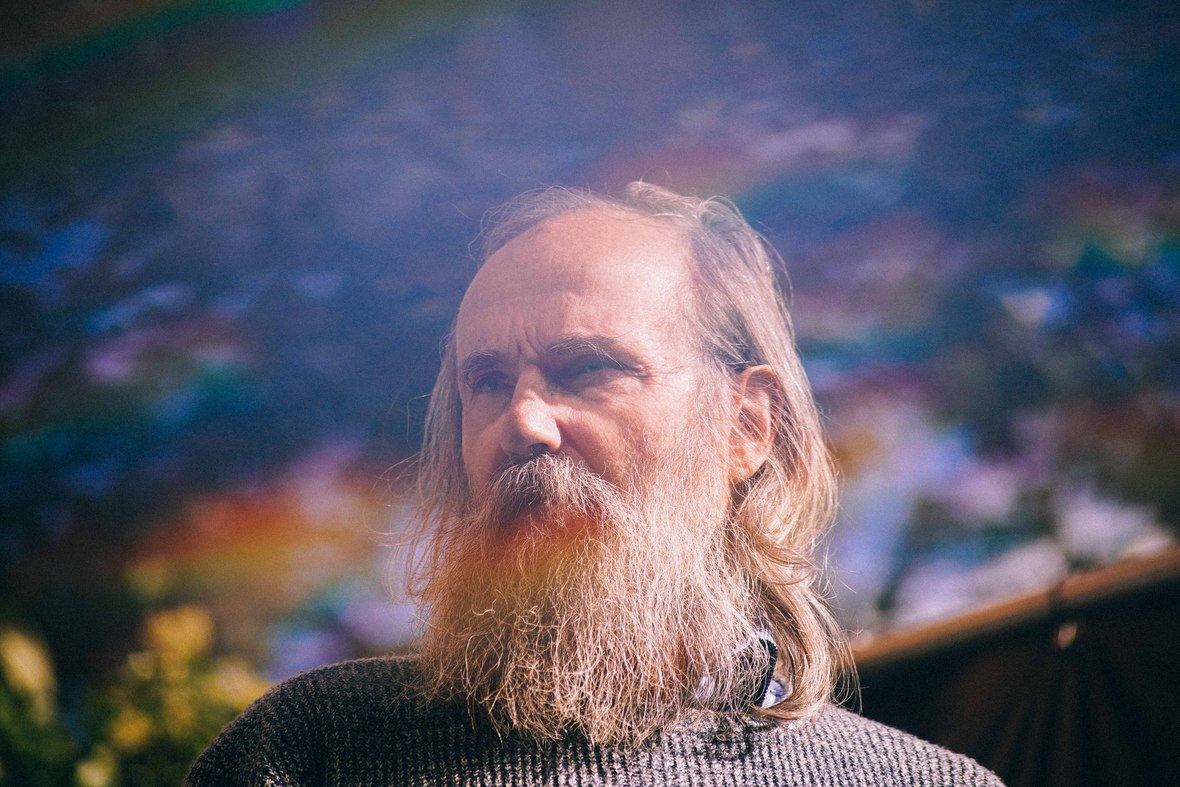Einstein on the Beach is a monument.
This is one of the few contemporary operas to have had the privilege of entering the repertoire through the front door, and to have been staged regularly since its premiere at the Festival d'Avignon on July 25, 1976. The work is the fruit of a collaboration between two eminent representatives of the New York avant-garde: composer Philip Glass (b. 1937), one of the founding fathers of repetitive music - even if he doesn't like the label - and experimental theater director Robert Wilson (b. 1941). The creative team does not stop at these two names alone, as it also includes choreographer Andy de Groat and dancer Lucinda Childswho will rewrite the choreography for subsequent productions.
Absolutely everything about Einstein on the Beach is out of the ordinary.
The length of the show plunges the audience into almost 5h30 of intermission-free entertainment. The music begins as the audience enters the opera house, and continues almost uninterrupted until the end. Audiences can freely choose to leave or return at any time.
The libretto, then, is largely written by a fifteen-year-old autistic teenager, Christopher Knowles, with whom Bob Wilson worked for a long time. There is no narrative to support this immense edifice, and virtually nothing in it refers directly to the famous physicist who gives it its title, Albert Einstein. Knowles wrote twelve chapters of a bewildering libretto, poetic but devoid of any narrative thread, responding to the director's insistence that he write about this character. Glass and Wilson had initially hesitated to choose between Hitler or Chaplin, before settling on Einstein, whom they felt they shouldn't tell anything about, as his celebrity made any biographical reference unnecessary. He is therefore present in the opera only in passing references: the first scene begins on a steam train, while the last ends on a spaceship; references to numbers, astronomy, chemistry and the measurement of time dot the sets; the geometric figures that fascinated the young student in his early days; a violin soloist dressed as in a famous photograph of the musician-scientist; and stage costumes all based on another famous cliché of the physicist in his Princeton office: wide dark pants held up by suspenders, white blouse, tennis shoes and wristwatch. Texts by Lucinda Childs and Samuel M Johnson, one of the company's dancers, complete Knowles' libretto.
The staging, based on three mathematically-treated themes (train, trial and spaceship, in all their possible associations), is arranged in four acts and five articulations. It is entirely based on drawings, which Wilson, also a visual artist, drew before any other form of reflection. They inspire tableaux of striking dreamlike beauty, drowned in the director's specialty of bluish tones and subtle lighting effects, which form a whole with the repetitive choreography written by de Groat and then Childs. The show oscillates between ecstatic serenity and Kafkaesque madness. Each participant - musician, dancer, actor, singer, chorister - is first and foremost a multi-hatted performer, and this is also one of the major characteristics of the work, which at its premiere saw Philip Glass himself holding the electronic organ in the orchestra for this musical marathon.
Einstein on the Beach. Эйнштейн на пляже. Роберт Уилсон и Филип Гласс. from Форма агентство в on Vimeo.
The music, finally, marks the apogee of Philip Glass' most radical minimalist and repetitive period. Inspired by his discovery of Indian music in the sixties, with Ravi Shankar and Alla Rakha, but also by his love of rock, jazz and clear, identifiable processes, it oscillates between monotony and surprise, drawing the listener into a hypnotic ecstasy lasting several hours. Lyrically, the chorus churns out numbers or notes in incantatory formulas with haunting rhythms. Passing from long, soaring tracks to thunderous, jouissive climaxes, the show leads to a final nuclear explosion, ending with the glimmer of hope of a simple love text between a man and a woman, written by Samuel M Johnson.
The fear of the Cold War and the peace-and-love response to it, so marked by the legacy of flower power- themes specific to the Seventies - still speak to our times, shaken by new anxieties in the midst of an ecological crisis, between fears of global warming, rising sea levels and economic collapse. Nor has music lost any of its topicality, responding to a pressing need to let go. Today, Einstein on the Beach is enjoying new productions, and the work is proving that it can live on its own without Bob Wilson's deeply rooted vision. This is the case in an innovative concert version, set by Germaine Kruip withEnsemble Ictus, Collegium Vocale Gent and Suzanne Vega as sole narrator, premiered in 2018. The following year, the Grand Théâtre de Genève staged a new production of the opera by Daniel Finzi Pasca.
You can listen to Philip Glass's "Avignon, 1976: Creation of Einstein on the beach" on France Musique
Guillaume Kosmicki



)
